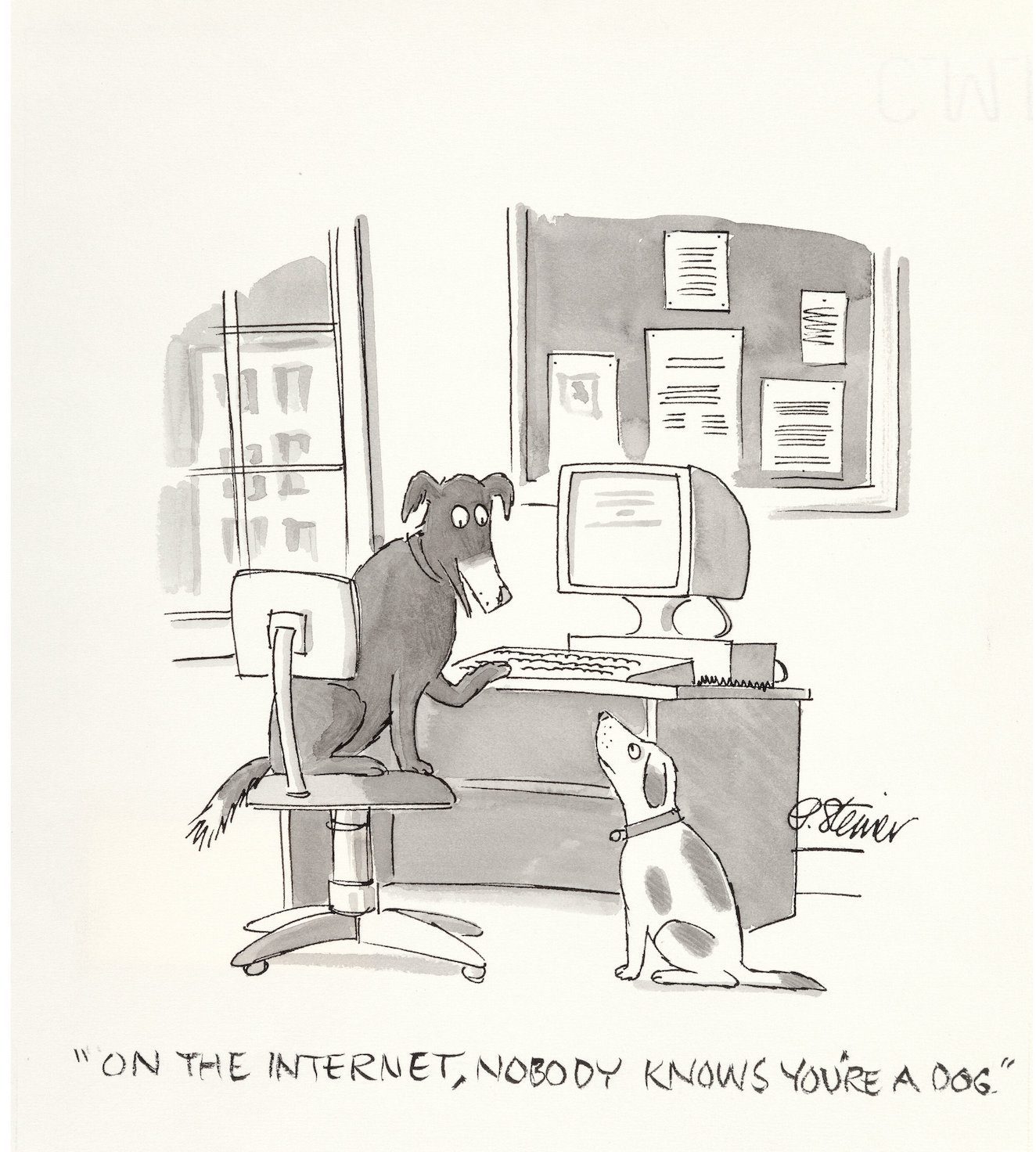
July 5th, 1993 was a simpler time, a decade before Facebook and 17 years before Instagram. Most computers still accessed the Internet via dial-up, and the quickest form of communication for most people was fax. The iPhone wasn’t even a glimmer in Steve Jobs’s eye.
And yet cartoonist Peter Steiner, in that week’s issue of the New Yorker, was somehow able to distill an essential truth of the then-protean Internet in a now-beloved comic. In it, a dog sits at a desk with a computer on it, looking merrily at another canine, saying, “On the internet, no one knows you’re a dog.”
That comic, which has gone on to be the most reprinted in the magazine’s history, proves so enduringly popular that it recently sold at auction for a whopping $175,000, the highest price for a single cartoon on record.
And while the New York Times said that the image “captured the spirit of the internet” and Bill Gates paid $200 to have it reprinted in his 1995 book The Road Ahead, about the revolution brought about by personal computers, Steiner revealed to Dallas-based Heritage Auctions, who handled the sale, that his intention “wasn’t about the internet at all. It was about my sense that I’m getting away with something.
“I realized the cartoon is autobiographical and that it’s about being an imposter or feeling like an imposter,” Steiner added. “I’ve had several checkered careers, and in every one, I felt like a bit of a fraud. I mean, I think many people have that syndrome, the sense that, yeah, I’ve got everybody fooled: ‘They think I know what I’m doing, and they think I’m good at this.’ So for me, this morning, that was a kind of interesting revelation this late in the game.”
As is the way with these things, the cartoon made barely a blip with its original publication. But it made a lasting enough impression that, over the years, its popularity grew. It has been printed on mugs and T-shirts, and even inspired a 1995 play.
Steiner has now contributed more than 400 cartoons to the magazine, in addition to other publications such as Saturday Review and National Lampoon. He’s gone on to have a successful career as both a painter and author of spy novels. But it’s this image that may be the one that defines him, for better or worse.
Or, as his editor, the New Yorker‘s long-running head of comics, Robert Mankoff, put it: “Peter’s done hundreds of cartoons—wonderful cartoons. But people remember a few of your cartoons, so we both know what cartoon will be in our obituaries.”
To which Steiner replied: “I guess I can live with that as a headline.”
More Trending Stories:
Four ‘Excellently Preserved’ Ancient Roman Swords Have Been Found in the Judean Desert